Note: this post has been referenced in the French Glossaire du Haut-Fourneau (Glossary of Blast Furnace, PDF), in an entry about the film (French title given as “COUPOLA LA VILLE DES HAUTS FOURNEAUX”, though I’ve also seen it as “La ville des coupoles”)
I. Truthiness
Can a fictional movie be considered a documentary? If settings are real and characters are authentic, does it matter to the viewer that the narrative is fiction? Fifty years later, can fiction provide important historic perspective? These questions are raised by watching City of Cupolas キューポラのある街 (1962), a film thoroughly infused with the rhythms of Kawaguchi, Saitama 川口市, an old steel foundry city just north of Tokyo. If the film is “about” anything, it’s about growing up and moving on. (For detailed plot outlines see the following English and Japanese summaries).
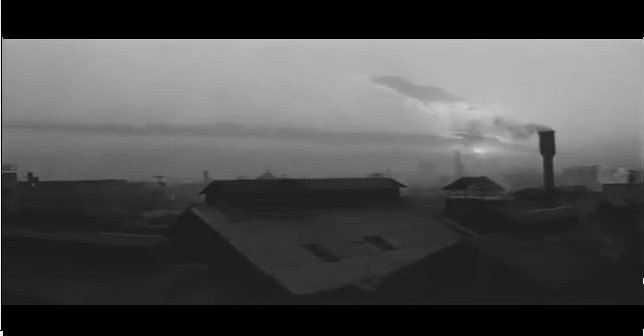
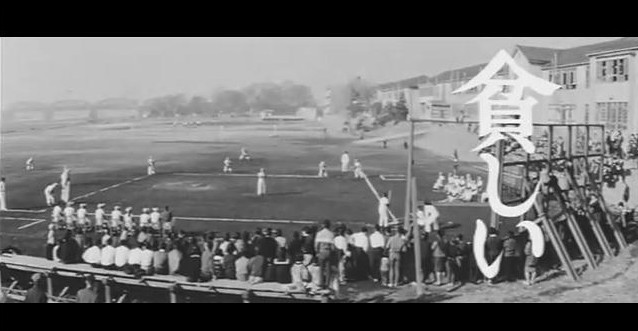
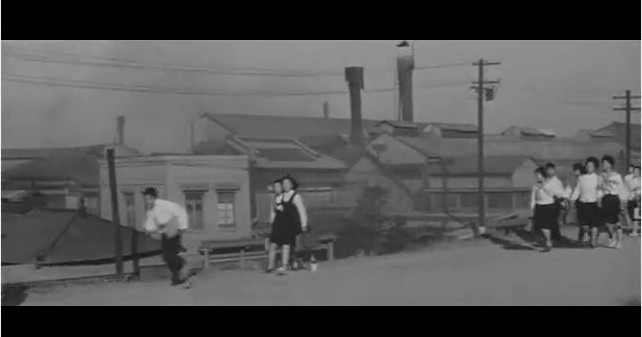
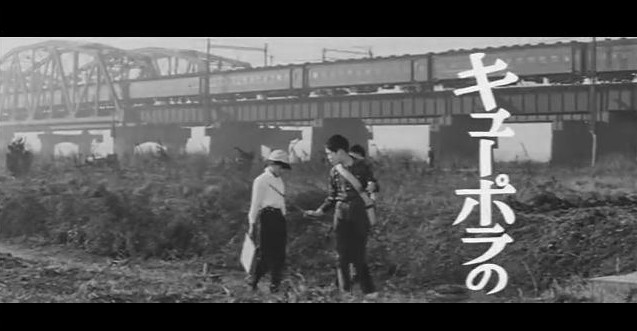
Plots come and go, but images remain, and the images I see months after my only viewing are a band of boys scampering through the dusty streets and muddy woods of Kawaguchi. The details of their exploits are not important – they don’t uncover any dead bodies or solve any crimes – but in aggregate they tell the story of young male friendship and describe in great detail the joy and adventure of being 8 years old and exploring the world around you. All of which makes the departure of one of the friends (Miyoshi Kanayama), whose family is Korean, that much more painful; his family’s repatriation to North Korea is one of the major themes of the film, and went completely unnoticed by my viewing in Japanese, without subtitles. Not completely unnoticed; I could tell the characters were speaking in dialect or with a strong accent. (The gap-toothed Korean boy, Miyoshi Kanayama 金山サンキチ, played by 森坂 is one of my all-time favorite rascals in film history.)
My favorite rascal (on left)
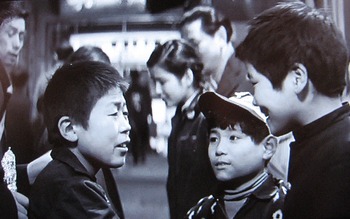
II. Eiga-no-ganda [sic] 宣伝
Some have criticized the film for its positive portrayal of the repatriation of Zainichi Koreans 在日韓国・朝鮮人 to North Korea, which began in 1959. Return business きこくじぎょう, 귀국사업, as it was called, was reportedly welcomed by the Japanese and American governments, who “saw Koreans in Japan as “Communists” and “criminals”. The campaign itself was sponsored by the ethnic activist organization and de facto North Korean embassy Chongryon 在日本朝鮮人総聯合会 , 재일본조선인총연합회
According to my research…I mean Wikipedia:
“[the] numbers of both Japanese and Koreans going to North Korea dropped sharply in the 1960s as knowledge of the poor economic conditions, social discrimination, and political repression faced by both Korean and Japanese migrants filtered back to Japan by word of mouth.”
Despite accusations of propaganda, the broad social forces in the film are not the focus. Instead, the film is centered on the emotions and actions of growing children and rarely, if ever, comes across as a film with a “message” or agenda.
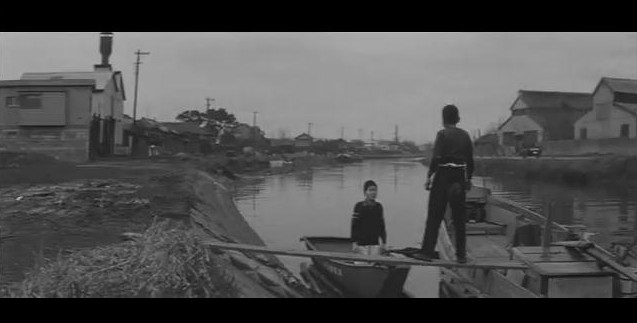
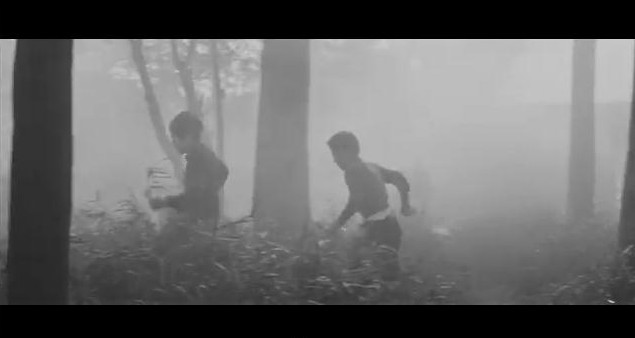
III. A girl’s life 女の子の生活
Let’s forget about North Korean repatriation for a second. The star of the film is the remarkable Sayuri Yoshinaga 吉永小百合. She plays Jun, a smart, athletic and generally optimistic girl despite the adult responsibilities she has taken on, including delivering a baby and negotiating her alcoholic father. Unlike the boys, Jun’s trials and tribulations are far more dramatic, including an attempted rape. But this is no sob story. Jun is strong and independent and we never lose faith that she will prevail unscathed. But not unchanged.
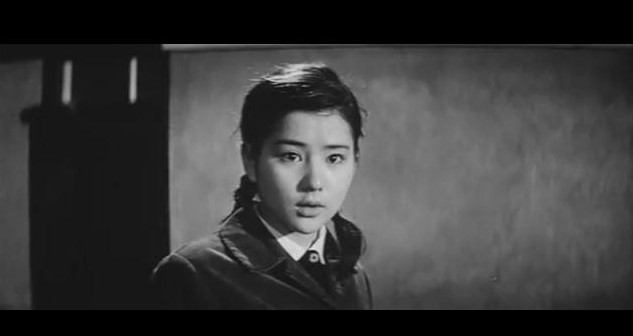
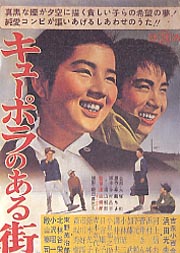
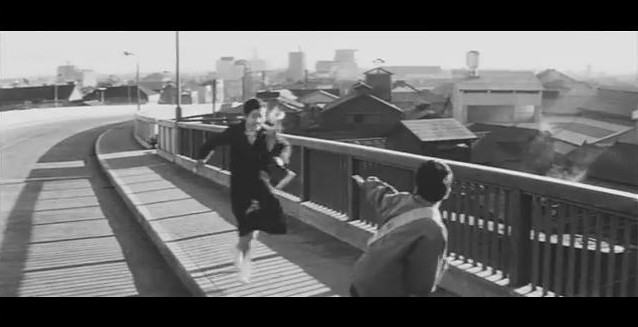
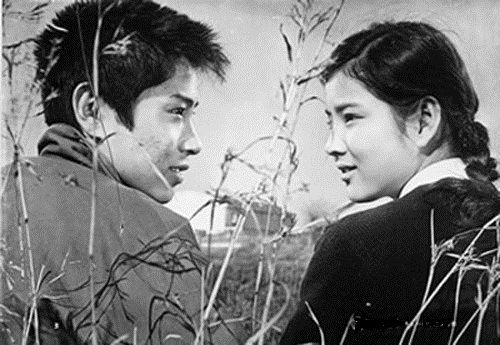
The film was based on a story by Chiyo Hayafune 早船ちよ – first published in the magazine “Mother and Child” 母と子 in 1959 – and perhaps because of being written as a serial, Jun’s scenes resemble pages of a diary acted out before our eyes. They are full of details such as her work in a pachinko parlor パチンコ collecting spent steel balls from the old manual machines, and include the universal topics of young love and the terror of experiencing a period for the first time 初潮. Sayuri Yoshinaga deservedly won Japan’s best actress Blue Ribbon ブルーリボン賞 for her role; the film won best picture.
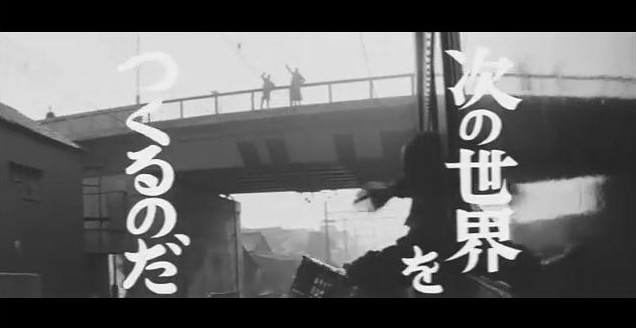
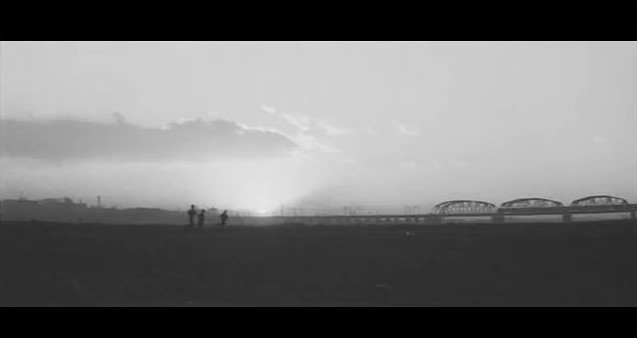
IV. A travel guide 旅行ガイド
For a film without a strong narrative arc, the end was surprisingly satisfying. The Korean family is given a tearful send-off as they leave town. For reasons that I will not spoil here, the son Miyoshi returns to town for one last day, and upon his final departure, Jun and her brother (?) wave one final goodbye to Miyoshi as his train pulls away.
I watched the film a few months ago at the Furuibashi Cultural Center 古石場文化センター in Koto-ku (map) (for more event information about films and concerts check their concert webpage). It was the first public screening of this film since 1998. Most of the audience was old and would have been quite familiar with the milieu presented by the film; in some ways it felt like watching home movies or re-living a collective memory. For all of us in the audience, childhood is so distant that it is essentially a dream. It is nice to travel back to those days.
If you’d like to travel to present-day Kawaguchi, consider checking-out the KAWAGUCHI ART FACTORY, Formerly a munitions factory, the building is now home to studio space for artists as well as small and medium-sized manufacturers including a headstone engraver, a custom furniture maker, and a stagecraft designer. It appears that the studios are generally closed to the public, but it’s worth keeping an eye on the artists in this space, as they occasionally hold events in or around this historic space. See their website for details.
[August 2016 note: the Kawaguchi Art Factory closed in 2015, with the building slated for demolition in January, 2016 (source).]
- KAWAGUCHI ART FACTORY (Google map)
- 埼玉県川口市元郷2-15-26 日本金属鋳造工業株式会社 代表取締役金子良治 〒 332-0011
- Cast Metals Industry Co., Ltd. Representative Director 2-15-26 Motogo Kawaguchi City, Saitama Prefecture, 〒 332-0011
- http://www.art-kouba.com/greeting.html
Red sluice gate:
And if you can’t visit the art factory, you can walk across the Arakawa (river) 荒川 to the Iwabuchi sluice gate 岩淵水門 (aka Akasuimon 赤水門, Red Sluice Gate), which was completed in 1924 and is a relatively famous architectural relic in Tokyo for re-routing the Arakawa River and creating the Arakawa Floodway 荒川放水路, a canal 1/4 the length of the Panama Canal. Google map: Old Red Gate
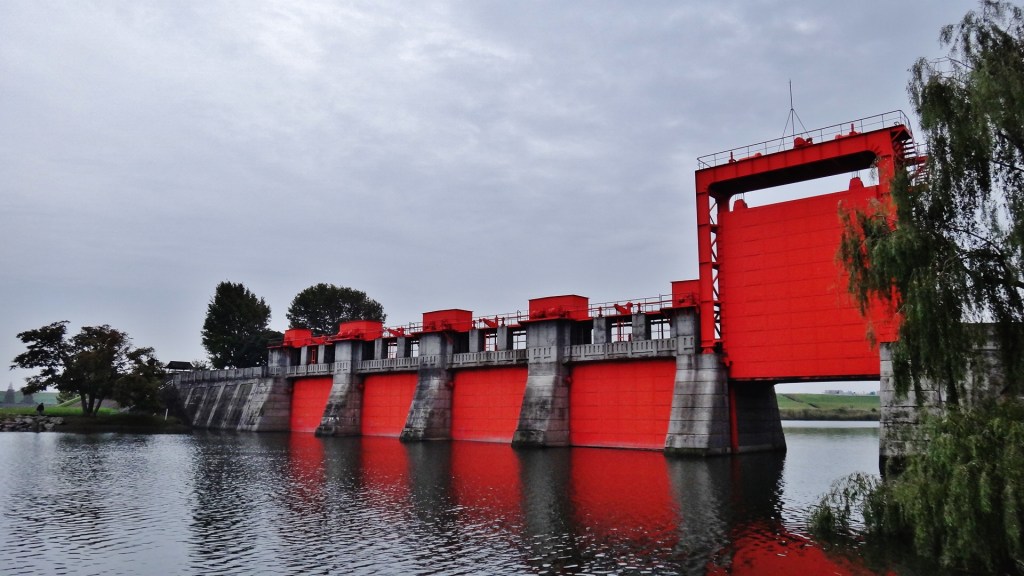
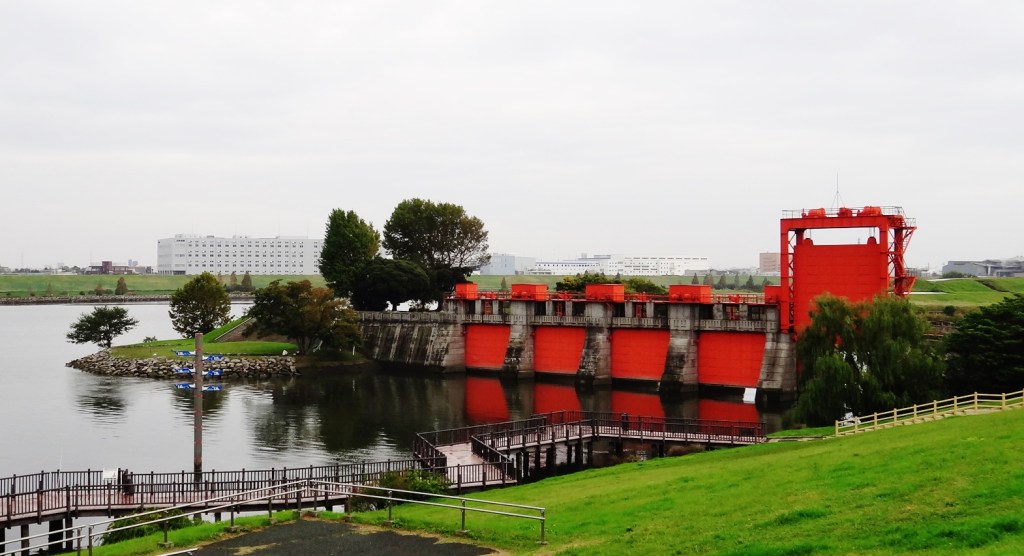
Selected Details & Resources:
- Title: キューポラのある街 / キューポラのある町 [In English this film is variously referred to as: City of Cupolas / Cupola, Where the Furnaces Glow / Cupola / Town in the cupola / Kyupora no aru machi / Kyupora no Arumachi / Cupola no aru machi / Kyupora / Cupola / Foundry Town]
- Black & White, 99 minutes
- Release date (Japan): April 8, 1962
- Awards: Japanese Blue Ribbon best picture, best actress
- Director: Kirirô Urayama 浦山桐郎
- Plot summaries (English): imdb
- Plot summaries (Japanese): 幻映画館(122)「キューポラのある街」 and eiga.com
Other resources:
- Japanese Movie Database (Japanese)
- キューポラのある街 [DVD] Kyūpora no aru machi [DVD] (Amazon Japan)
- Wikipedia: “Foundry Town”
- http://ja.wikipedia.org/wiki/キューポラのある街
- Cupola, Where the Furnaces Glow (Urayama, 1962)
- キューポラのある街 劇場公開日 1962年4月8日 A city with a cupola (eiga.com)
About Akabane, Tokyo, and Kawaguchi, Saitama:
- Akabane Station, Kita-ku & Iwabuchimachi: water, tunnels and liberty
- Be thee small, thy manufacturers of Japan
- Kawaguchi at dusk:
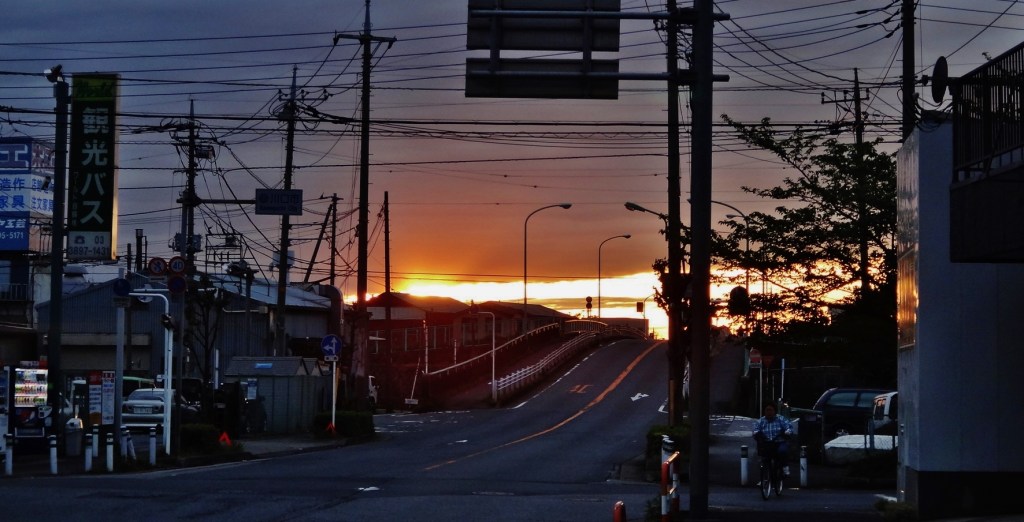
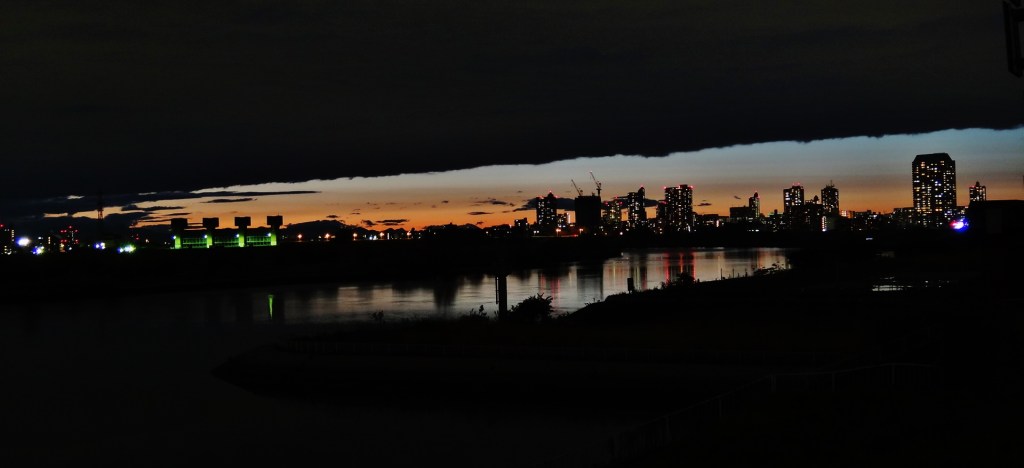
[…] Foundry Town (aka “City of Cupolas”) キューポラのある街 (1962) […]
[…] top of the map is Kawaguchi Art Factory (map), now closed. This is marked as “STUDIO” in the map portion of the […]
Watched this movie yesterday, really THAT good.
Like you said “it’s no propaganda”, and the “messages” are conveyed naturally through the characters. Made me remember and see a dialogue with Twenty-Four Eyes (Kinoshita) and A Town of Love and Hope (Oshima). It’s like they show the social conditions becoming increasingly better allowing the young to hope (and succeed).